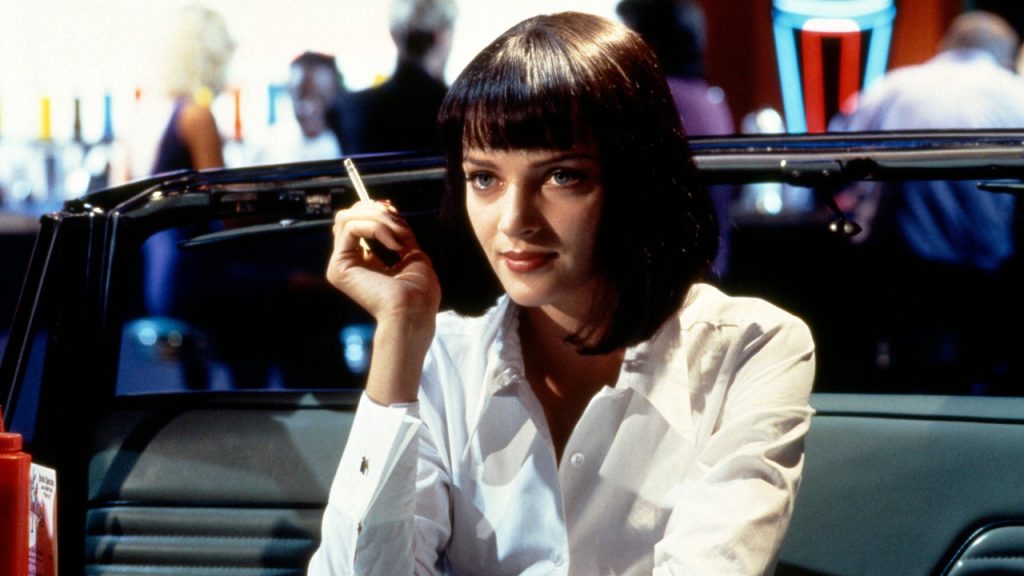Thirty years ago today, Quentin Tarantino released his second feature film, Pulp Fiction, which remains a cultural phenomenon. One scene that stands out is the Jack Rabbit Slim’s Twist Contest, featuring Mia Wallace (Uma Thurman) dancing the Twist with her hitman escort, Vincent Vega (John Travolta). Their iconic outfits, Mia in a white button-up shirt with black pants and Vincent in a black suit and bolo tie, have become a popular Halloween costume for couples. Pulp Fiction’s costumes, like the UC Santa Cruz banana slugs T-shirt and the gimp suit, have entered the cultural lexicon as well.
The film’s costume designer, Betsy Heimann, drew inspiration from Tarantino’s first film, Reservoir Dogs, for Pulp Fiction’s costumes. She wanted to establish a connection between characters like Jules Winnfield and Vincent, placing them in the same universe as the diamond thieves. Heimann tailored Vincent’s linen suit to reflect his messy nature while giving Jules a retro ’60s look with a narrow collar to emphasize his preacher-like persona. However, the most iconic look from the film remains Mia’s white button-up and black trousers, inspired by her desire to show the male characters that she is on their level.
Heimann’s approach to Mia’s costume was influenced by her character’s background as the wife of a gangster who seeks validation from male characters by dressing like a “Reservoir Dog.” Over the years, Pulp Fiction’s costumes have continued to captivate audiences and influence pop culture, with fans around the world recognizing the significance of the film’s fashion choices. From Mia’s sleek ensemble to Vincent’s casual yet stylish suit, each outfit plays a crucial role in shaping the characters’ identities and enhancing the film’s overall aesthetic.
The enduring appeal of Pulp Fiction’s costumes lies in their ability to convey the characters’ personalities and relationships through their clothing choices. Whether it’s Mia’s carefree yet rebellious attitude or Vincent’s laid-back charm, every outfit tells a story and adds depth to the narrative. As a result, the film’s fashion choices have become synonymous with the characters themselves, solidifying their place in cinematic history and ensuring that Pulp Fiction’s legacy lives on for generations to come.
Three decades after its release, Pulp Fiction continues to inspire filmmakers, fashion designers, and pop culture enthusiasts with its timeless style and innovative storytelling. From the iconic Twist Contest scene to the unforgettable costumes, the film remains a testament to Tarantino’s unique vision and creative genius. As audiences look back on Pulp Fiction’s impact on the world of cinema, they can’t help but marvel at the enduring power of its fashion choices and the lasting influence they have had on popular culture.


